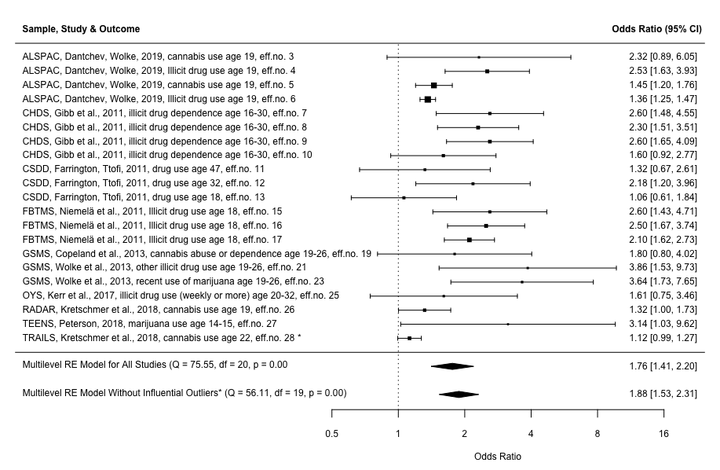Childhood and Adolescent Bullying Perpetration and Later Substance Use: A Meta-analysis

Abstract
CONTEXT: Previous meta-analyses substantially contributed to our understanding of increased drug use risk in bullies but only included research up to 2014 and did not report on other types of substances. OBJECTIVE: To review and meta-analyze existing evidence regarding the prospective association between peer bullying perpetration in childhood and adolescence and later substance use. DATA SOURCES: Electronic databases were searched on March 14, 2019. STUDY SELECTION: We selected peer-reviewed articles and dissertations in English reporting original empirical studies on associations between bullying perpetration in childhood or adolescence and later use of drugs, alcohol, or tobacco. Records were assessed for eligibility independently by 2 authors. DATA EXTRACTION: Data extraction and quality assessment was performed by one author and checked by another author. RESULTS: In total, 215 effects were included from 28 publications, reporting on 22 samples, comprising 28,477 participants. Bullying perpetration was associated positively with all types of substance use (drugs, alcohol, tobacco, and general). The results for combined bullying-victimization were more mixed, with generally weaker effects. LIMITATIONS: Effects were based on a large variability in operationalizations and measures of bullying and substance use, impeding the interpretation of the pooled effect sizes. Although bullying appears to be a risk factor for substance use, no inferences can be made about so-called causal risk factors that can provide the basis for preventive interventions. CONCLUSIONS: There is evidence that adolescents and particularly children who bully their peers have a higher risk of substance use later in life than their nonbullying peers.